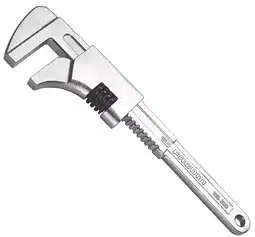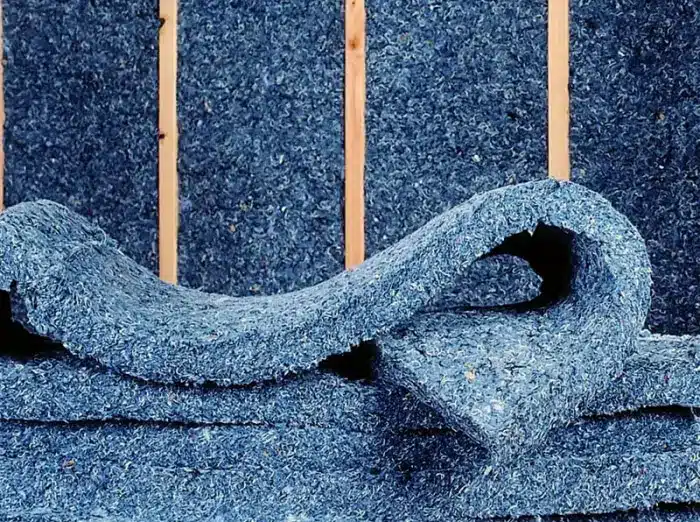What is a Monkey Wrench is a frequent question people ask when sorting through tool names, and trying to identify which is which. This state can be very difficult when it comes to selecting the appropriate equipment for the job.
But don’t worry we’ll explain all you need to know if you’re having trouble finding the tool you need or are unsure of what kind of tool you need!
We will go through the definition of a monkey wrench, its applications, and the origin of its name in this blog post!
Table of Contents
- About Wrenches and Screwdrivers
- What Exactly is Monkey Wrench?
- What is The Monkey Wrench Used For?
- What Distinguishes A Pipe Wrench From A Monkey Wrench?
- Things to Look Out For When Buying a Monkey Wrench
- Throw a Monkey Wrench
- Who Invented the Monkey Wrench?
- What is a Monkey Wrench Look Like?
- Frequently Asked Questions
- In Summary: What is a Monkey Wrench
- Refereces
- Recommended Posts
About Wrenches and Screwdrivers
The flat-bladed bit for the carpenter’s brace (1744) came before the humble screwdriver. After 1800, the handled screwdriver can be seen on a woodworker’s bench and can be found in tool kit inventories.
It was not until 1850 that mechanized screw machines started producing tapered, gimlet-pointed wood screws in large quantities that screwdrivers became widely used instruments.
The screwdriver’s early design was based on flat stock, and its occasionally scalloped edges had no functional value. Because it was flat, the blade was simple to haft but became weak when used incorrectly for prying.
The current screwdriver shape, which is round with only a flat spot at the end, was developed to reinforce the shaft and utilize easily accessible round wire stock.
Early box and socket wrenches were limited to a specific type of screw or nut with a flat head. Rectangular slots may be present on one or both ends of the open-end wrench. These wrenches had straight, angled, or S-shaped handles when they were first created, and they were composed of wrought iron. Around 1800, cast iron started to be used. These days, wrenches are drop forgings with a variety of formats.
Even in the 18th century, sliding-jaw wrenches were created to handle a variety of flats, in response to the constraints of fixed-opening wrenches. In these, the parallel jaw was designed to move down the handle until it engaged the flats, with the fixed jaw being provided by the end of an L-shaped handle.
Again
In the initial models, a wedge was hammered into place to secure the movable jaw in place. Patents for screw wrenches, which had a movable jaw kept in place and adjusted by a screw whose axis ran parallel to the handle, started to appear in the early 19th century.
The most prevalent illustration is the monkey wrench, whose name first surfaced in tool catalogs in the 1840s, though it’s possible that it was in use earlier. A more recent invention, the slim and angled Crescent wrench is a practical variant of this kind of wrench.
What Exactly is Monkey Wrench?
You’ve come to the right place if you’ve been wondering what a monkey wrench is.
One ubiquitous, multipurpose instrument that may be used for a wide range of tasks is the monkey wrench.
When they were first created in the 19th century, monkey wrenches were typically 24 inches long and made of flattened iron pieces.
An L- or F-shaped wrench with a fixed “upper jaw” and a lower jaw that can move up and down the wrench due to an internal screw mechanism are the common physical characteristics of a monkey wrench.
The way the lower jaw glides up and down the wrench, which is frequently compared to a monkey climbing up and down a tree, is how this wrench got its name.
Following its creation, a plethora of unique wrenches and tools were created, all of which were altered just by taking inspiration from the monkey wrench’s fundamental design.
The original monkey wrench really gave rise to a number of specialized wrenches, including pipe wrenches, vice grips, and even adjustable clamps.
It is important to remember, though, that these are tools made for situations in which a monkey wrench would not fit.
What is The Monkey Wrench Used For?
Monkey wrenches are useful for a wide range of tasks, as we have already discussed.
It is frequently used, for instance, to assist in clamping onto a variety of pipes and fasteners, including bolts, screws, and even lug nuts.
Though it may appear challenging at first, once you get the feel of it, using a monkey wrench correctly is actually rather easy!
The jaws of a monkey wrench are the most crucial component. They are attached to the fastener head, and it is through this attachment that you should slide the lower jaw to provide a particularly firm hold on the fastener.
You should be able to increase the pressure you use to loosen or tighten the fastener once you have both of the monkey wrench’s jaws firmly grasping the fastener’s sides.
The wrench must be turned counterclockwise to loosen the fastener and clockwise to tighten it, naturally.
What Distinguishes A Pipe Wrench From A Monkey Wrench?
A common question among those who are not familiar with tools is what the distinction between a pipe wrench and a monkey wrench is. This is logical given that the two have comparable looks.
What precisely separates these two types of wrenches, then?
An instrument called a pipe wrench is made to assist in turning threaded pipe and other pipe fittings during assembly or removal.
These wrenches work well for tightening or loosening rounded surfaces, like pipe fittings or threaded pipe, as their name would suggest. Also read: How Dangerous Are VOCs in Paint?
The jaw’s teeth, which enable the wrench to grab rounded surfaces so effectively, are what give it its remarkable effectiveness.
Therefore, the reason a wrench is so ineffective for adjusting rounded surfaces when employing one is that it lacks teeth in its jaw. For this reason, it is usually advised to use a pipe wrench on rounded surfaces and a wrench on flat surfaces.
Things to Look Out For When Buying a Monkey Wrench
Although they are not interchangeable, the same things need to be taken into account when purchasing pipe wrenches and monkey wrenches!
Sturdiness
To guarantee that the wrench you purchase is sturdy no matter what, make sure it is made of a durable substance like steel or aluminum.
Check this out: How to Increase PH in Pool | Practical Steps
Size and Weight
You should make sure the wrench is the appropriate size for the intended purpose; keep in mind that pipe wrenches are not adjustable like monkey wrenches are!
Although heavier tools may seem more dependable, heavy duty wrenches will always weigh more. Lighter tools are always preferable because they are more comfortable to use.
Grip
Make sure the wrench has a suitable grip that will allow you to use it without getting wounded or uncomfortable if you want to use it for a long time.
In order to help with comfort, we advise you to opt for a wrench with a rubber grip.
ALSO: Why You Should Stop Raking Fall Leaves | Expert. Idea
Throw a Monkey Wrench
Slogan. US, colloquial: to alter or harm something in a way that destroys it or keeps it from functioning as intended. Their preparations for a picnic were completely derailed by the storm.
Who Invented the Monkey Wrench?
Johan Petter Johansson
READ: How Pilot Lights Work | Thing you don’t know
What is a Monkey Wrench Look Like?

In terms of appearance, a wrench is recognized by its either L or F-shaped form, with a fixed “upper jaw” and a lower jaw that may move up and down the wrench due to an internal screw mechanism.
What is referred to as a wrench in Britain?
Monkey wrenches are also known as adjustable spanners by the Brits.
Why is it called a spanner by the British?
It most likely came from the relationship between “span” and “spin,” which had to do with the wheel-lock weapons’ winding springs. Since 1790, it has come to denote “wrench.”
SEE ALSO: How to Clean a Swimming Pool: Quick Maintenance Guide
Frequently Asked Questions
Undermine or thwart plans or a project, as in Our preparations were thrown into a loop when the boss said that we would need to work on Saturday. Industrial sabotage, or the act of inserting a tool within equipment, was first applied to other disciplines in the early 1900s.
According to other theories, it’s because a person can possess the same level of intelligence as a monkey and yet be able to apply it. The most widely accepted explanation, however, holds that Charles Moncky, whose name was spelled differently, was the inspiration behind the invention of the monkey wrench.
Repairs to railroad cars and steam locomotives required the use of this heavy wrench. A competent mechanic would only use a wrench in situations where a solid, open-end wrench was unavailable to suit a particular bolt or nut or if the bolt head or nut size wasn’t conventional.
One kind of adjustable wrench or spanner is the wrench. Furthermore, it is metaphorical to throw a wrench into the machinery in order to disrupt it, just as it is to put a heavy metal object into it. Though it was first used in Britain, North American speech and literature currently mostly use the phrase.
In Summary: What is a Monkey Wrench
A monkey wrench is a multipurpose instrument that aids in adjusting fasteners with flat surfaces. It may be identified by its unique L or F shape, which originates from its adjustable jaws.





